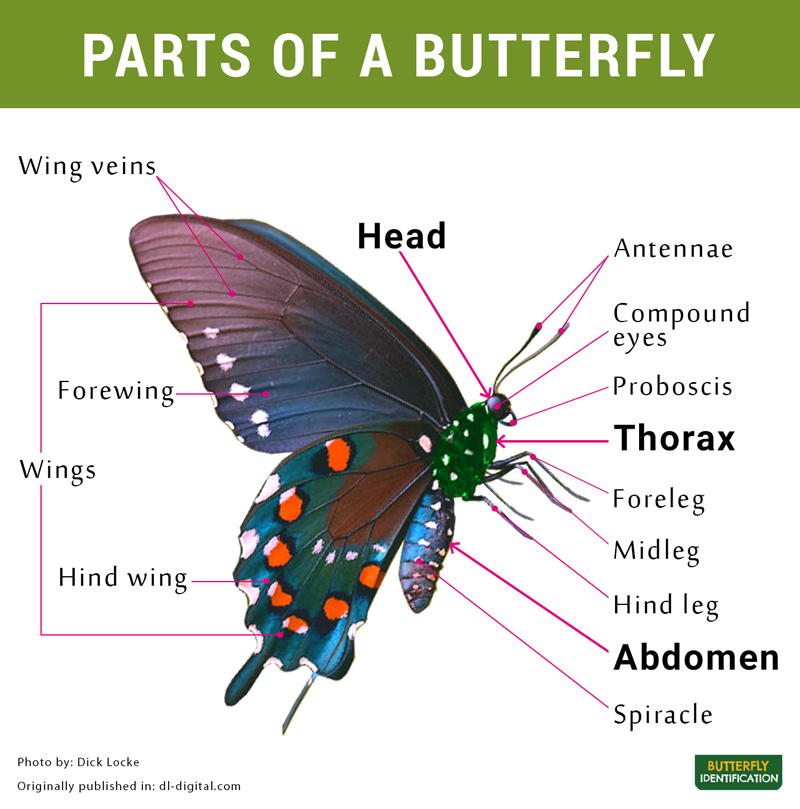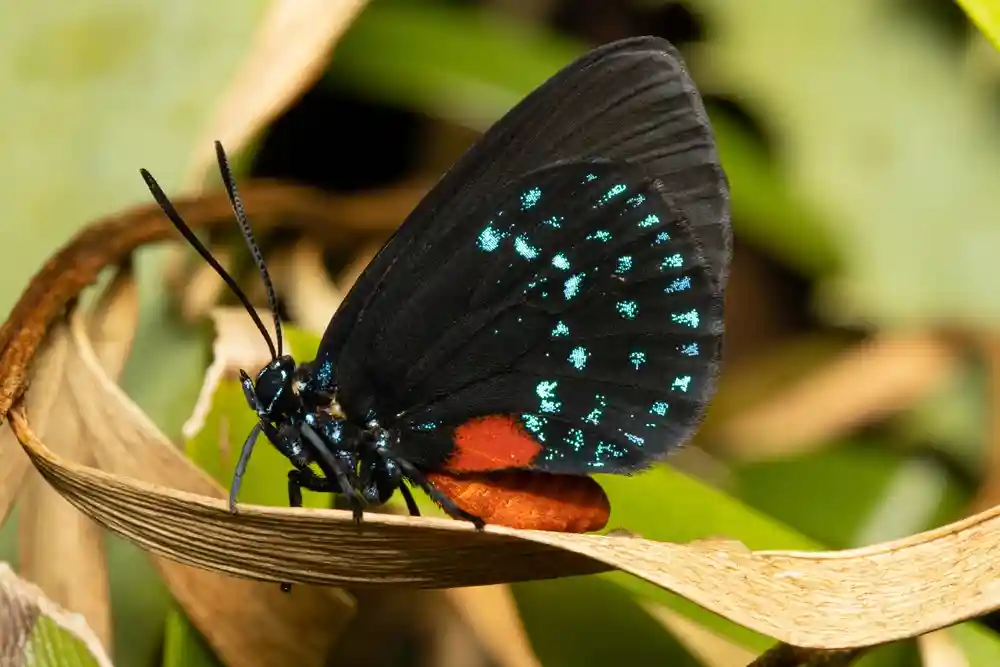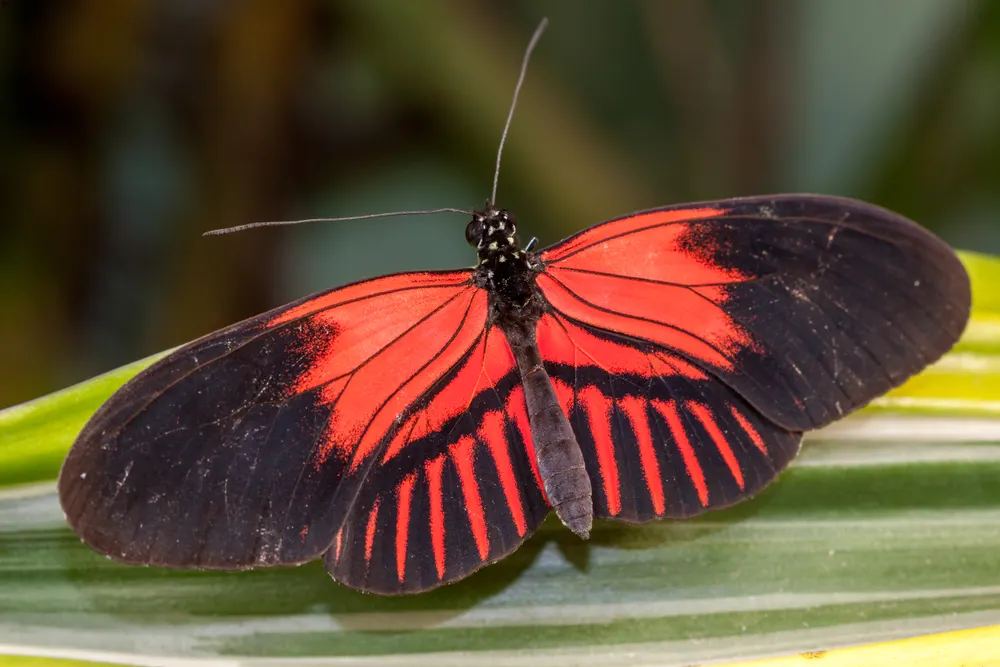Parts of a Butterfly
Butterflies
share some common morphological features with all other insect species. Like
all insects, the body of an adult butterfly can be divided into three main
parts
1. Head
2. Thorax
3. Abdomen
Body Parts of a Butterfly and Their Functions
1. Head
Their head comprises some essential organs that help in sensing things around and feeding. The following parts are observed on their head:
Antennae
These are the sensory organs that help a butterfly in picking up a scent in the air, varying from the odor of a mate to the aroma of flowers. They also assist in detecting motion and with balance or orientation.
Proboscis
The straw-like mouthpart of a butterfly is the proboscis. It is used for sucking up flower nectar, fruit juices, tree sap, water, or other fluids. It is tightly coiled up under its head when not in use.
Compound Eyes
These consist of several optical units, known as ommatidia, each of which has its own lens. Although a butterfly does not see the clear and crisp images that humans see, it can see in all the directions at the same time. Moreover, it can see UV light, which humans cannot.
2. Thorax
It is the middle section of a butterfly’s body, occurring between the head and abdomen. The thorax is divided into three segments, each of which has two legs. On the thorax, the following appendages are found:
Legs
A butterfly typically has a foreleg, midleg, and hind leg, each of which occurs as a pair. The legs are segmented into the coxa, trochanter, femur, pretarsus, tibia, and tarsus.
Aside from climbing and walking, its legs help it in smelling and tasting food, as well as pinpointing the host plant for its caterpillars. The special chemoreceptors on its tarsus pick up the scent from the surface on which it walks.
Wings
Each side of the thorax contains a forewing as well as a hindwing. These are covered with tiny scales that give color to its wings. The patterns on a butterfly’s wings provide it with camouflage, helping it hide from predators.
- Forewings: In male butterflies, the scent scales on forewings release pheromones for attracting females.
- Hind wings: These help the butterfly to execute evasive flight (in a zigzag pattern) at high speed.
3. Abdomen
It is the third section of a butterfly’s body and constitutes ten segments, of which the final 3-4 segments are the modified external genitalia. The following are some of the vital organs inside its abdomen.
Digestive Tract
It is the body part where a butterfly processes all the food it takes.
Spiracles
There are nine pairs of small openings found at the sides of a butterfly’s abdomen called spiracles, which allow the exchange of gases and let the butterfly breathe.
Reproductive Organs
The reproductive organs of both males and females are usually found towards the tip. In male butterflies, a pair of claspers occurs while the female butterflies have a tube-like structure for laying eggs.




